Breeding sheep at home
Sheep breeding is becoming more and more popular nowadays. Owners of private houses from time to time think about purchasing livestock for obtaining natural food or an additional source of income.

Sheep breeding at home
Sheep are bred for meat and wool, as well as milk, which is well suited for making homemade cheeses.
Of course, raising sheep at home requires certain skills and a stock of basic knowledge, but they are easy to acquire by familiarizing yourself with the basic nuances of caring for these animals. First of all, it is necessary to pay attention to the basics of proper nutrition of sheep, their breeding and caring for them.
Choosing a breed of sheep
The choice of the breed is the first task that needs to be solved. The main thing is to pay attention to the basic characteristics: the level of acclimatization to local conditions, the availability of sufficient grazing areas and the specialization of sheep breeding.
Sheep live on average about 14-15 years, but from the point of view of economic feasibility it is better to keep them up to 6-7 years, and then send them to slaughter. But when establishing the conditional time frame for slaughter, the characteristics of the breed should be taken into account.

Choosing a breed of sheep
Sheep breeds are divided into productivity groups. There are types of fine-wool breeds, which are distinguished by a uniform coat of small downy hairs. The group of semi-fine fleeces is represented by larger individuals, which are notable for their high meat productivity. They also develop very quickly, while maintaining the high quality of the wool.
From coarse-wooled breeds, owners can get good meat and sheepskin, especially in this regard, the Romanov breed, which is widespread in the northern part of the country, is distinguished. She also usually produces large numbers of offspring. For private farms, it is the breeds of meat directions that are most often given, since sheep are raised for slaughter.
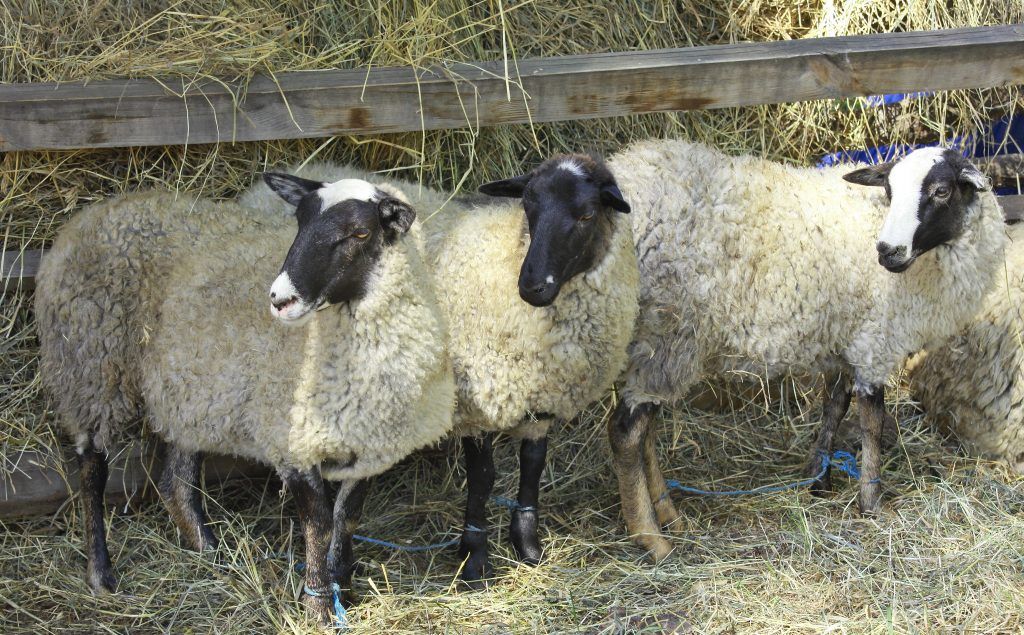
Romanov breed of sheep
The North Caucasian meat-wool breed is very popular. It differs not only in its production characteristics, but also in good heredity. Such sheep reach 55-65 kg in weight and produce more than 6 kg of wool.
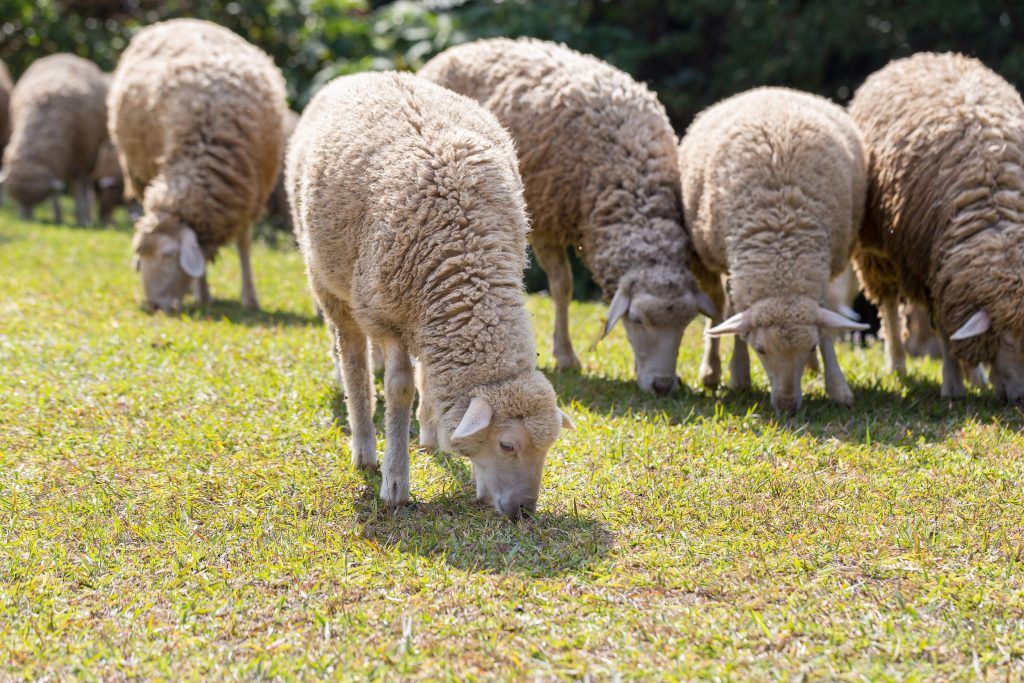
North Caucasian meat and wool breed of sheep
The Edilbaevskaya breed of sheep is intended for raising sheep at home. Thanks to their endurance, animals adapt well to climate change, which is ideal for novice sheep breeders who are just learning the basics of this exciting business.
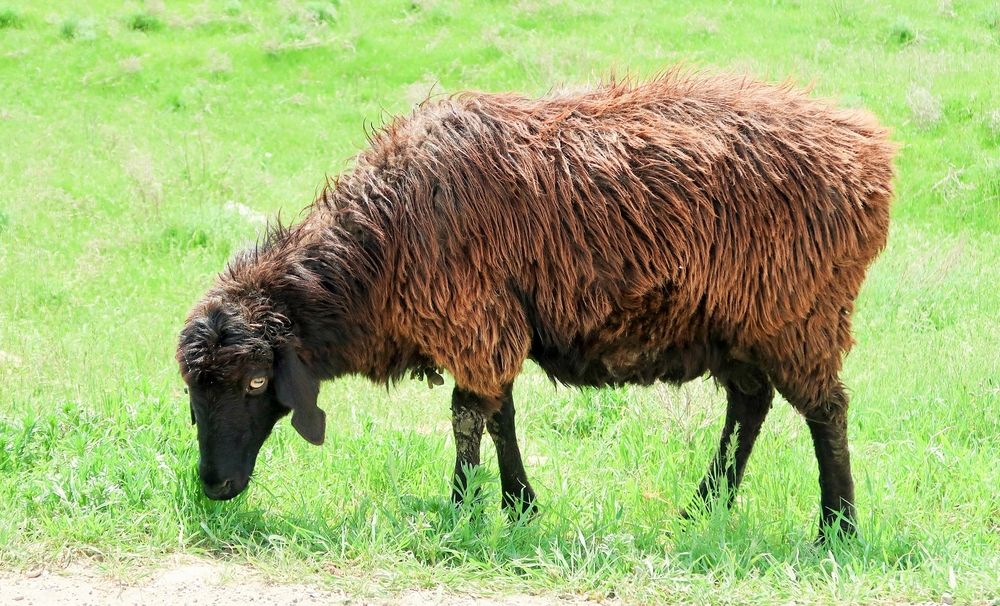
Edilbaevskaya breed of sheep
Basic content basics
After deciding on the maintenance of the sheep house, it is necessary to start with the arrangement of the sheepfold, and only then to start the sheep.Before buying animals and breeding rams, first of all, you need to decide how many heads you can keep, because this is only at first glance an easy profession. This will further determine the size of the sheepfold, as well as the amount of feed required. When raising sheep at home, it is advisable to determine in advance the place where the hay will be stored.
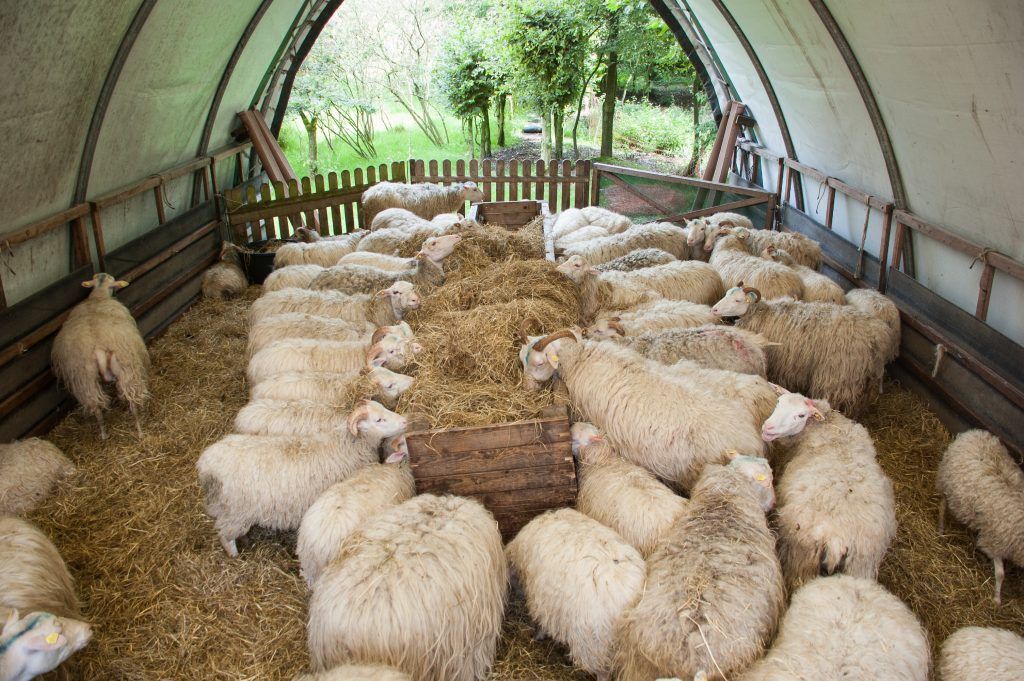
Sheep basics
Caring for sheep involves adhering to the principles of proper feeding.
The person must calculate the approximate amounts of feed. This is easy to do given that one animal needs to be fed at least 2 kg of hay per day.
After resolving issues with providing food, you need to think about a place for walking: without this, the sheep will not actively develop. And, of course, it is advisable to take care of the health of the livestock and arrange in advance with the local veterinarian about periodic examination and provision of emergency assistance if necessary. Animals are bought only after these basic questions have been resolved: without the necessary conditions, they will not develop well.
Sheep room
Sheep do better in a flock, so it is important to consider keeping at least a small flock. If space permits, the farmer can have several dozen sheep: they will get along well with each other. When buying a queen for breeding, it is advisable to calculate a place taking into account future lambs, because with the appearance of the first offspring, the livestock will increase. On average, a sheep gives birth to one lamb, but representatives of the Romanov breed give offspring more: from 2 to 4 newborns.
A cozy barn is suitable for a small flock, but if industrial maintenance is planned, this requires a special sheepfold with appropriate rooms and departments. Typically, it is built taking into account the location inside individual pens for animals, warehouses for feed, a corridor for staff work, a technical room for storing equipment and a vestibule.
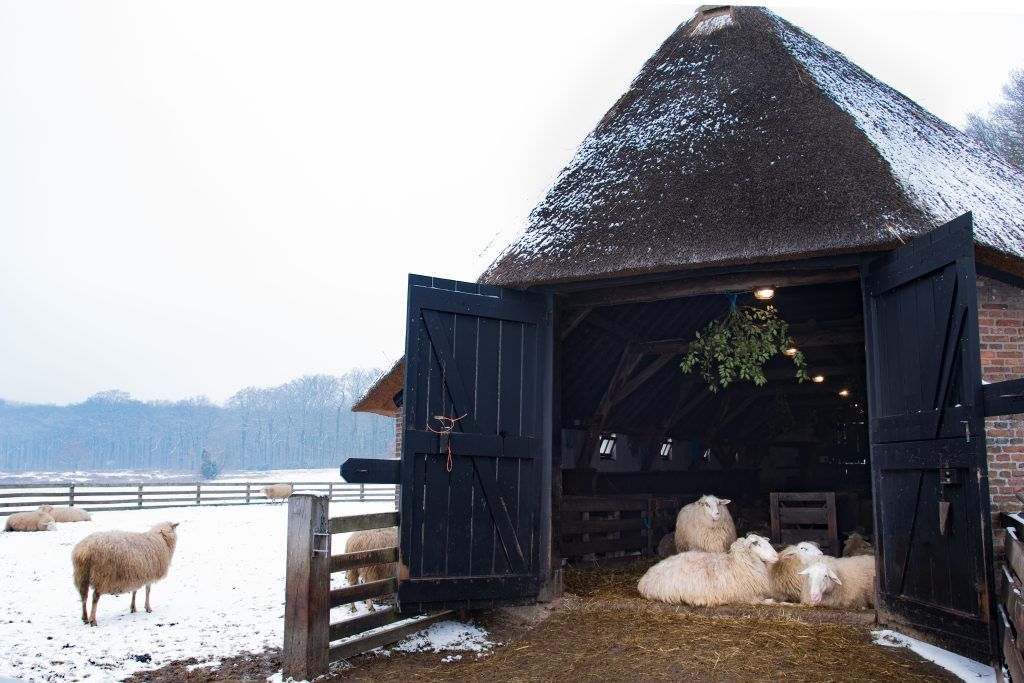
Sheep room
A ram breeder must make the right calculations. The optimal size of the total area should correspond to the number of animals: 3 m² is allocated for one sheep for comfortable keeping. At smaller sizes, it will be cramped, but too large a space is also not useful: in this case, the livestock will not be able to fully warm up with its own heat.
In winter, the normal temperature regime varies between 5-10 ° C, so if the climatic conditions do not meet the declared standards, an insulated room will be additionally needed. Sustainable livestock production has certain requirements. There are separate requirements for the premises where rams and sheep will live. It is important to ensure the rest of the ewes and to protect them from the main flock. In the delivery room, the temperature should be above 10 ° C, so in the winter, in any case, additional heating will be required, it is better to take this into account at the stage of planning the room.
Feeding and storage of feed
The basis of the diet of sheep is hay, therefore, when harvesting and storing it, it is important to follow certain rules so that it does not disappear. Hay is harvested in the summer season, when not only a large number of various grasses are in abundance, but there are also favorable conditions for its complete drying. If there is not enough pasture in the district where you can mow enough grass, you will have to buy it. In order to save money, you need to stockpile in the summer: at this time, hay is much cheaper than in the cold season.

Feeding the sheep
Do not store harvested hay on the ground. For the floor, you need to prepare wooden or cargo pallets. You also need to think about how to provide a reliable shelter from the rain. There is a little secret that allows you to preserve hay throughout the season: to make or choose compressed bales, because in this case the probability of moisture penetration is minimal.
It is important to correctly calculate the required stock of hay. On average, the volume of hay in bales varies within 250 kg. If we take bales as an example, then their weight is 10-15 kg, and the standard dimensions are 1.2 x 0.6 x 0.4 m.
It all depends on the characteristics of the blanking machine, how well it produces ramming. Do not forget. One animal consumes at least 2 kg of hay per day, so with simple mathematical calculations it is possible to determine the approximate dimensions of the storage room. Unfortunately, due to the climatic features of Russia, the duration of grazing on fresh grass is available on average only 3 months a year. That is why it is worth spending efforts on the preparation of feed, so that in the cold season there is something to feed the animals.
Walking the sheep
The correct organization of the walk is half the success of good growth of the sheep. If it is planned to keep the young animals purchased in the spring before slaughter in the fall, then it is not necessary to organize walks. If there is a desire to steadily keep a ram and use it as producers, then you cannot do without them. They are needed to ensure normal pregnancy, since sheep are herbivores, and this cannot be achieved without their active movement.
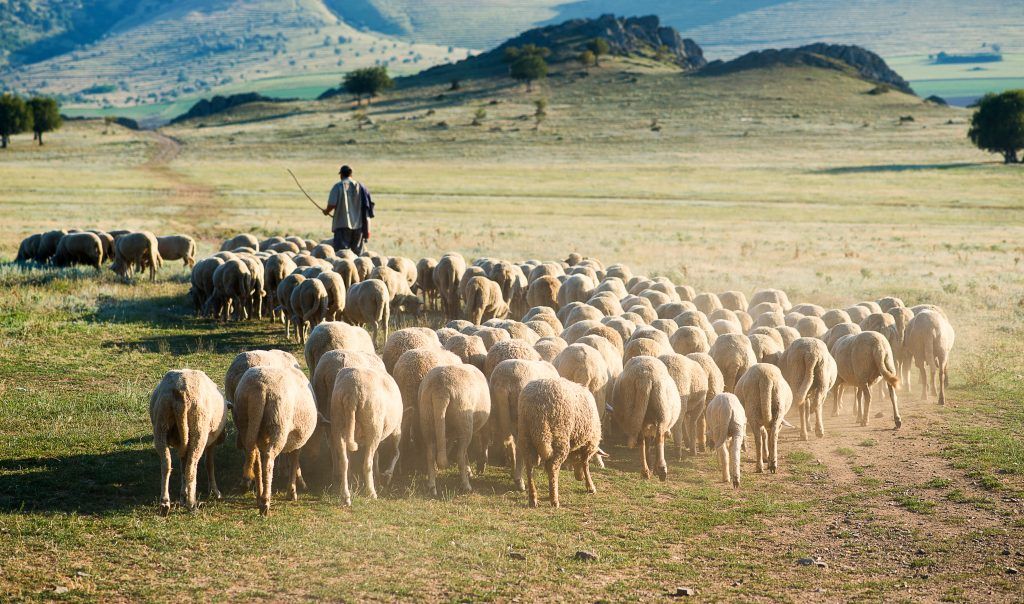
Organization of sheep walking
Without long walks, rams and sheep quickly weaken, which especially adversely affects the course of pregnancy and the lambing of the female. It is better to pay a little more attention to this during pregnancy. Some people solve this problem by arranging special paddocks. It is imperative to build a canopy, drinkers and feeders in the walking area so that individuals can hide from precipitation and drink some water if necessary.
Walking animals can be done if the following conditions are met:
- suitable temperature for walking;
- canopy;
- the animals are healthy and can interact with each other while walking.
First aid kit
Not a single animal is insured against the occurrence of diseases, but the owner must ensure conditions under which such risks are minimal. To do this, it is enough to follow the basic rules of care. An integral part of them is the organization of periodic preventive examinations by a veterinarian. It is necessary to consult with him about what funds should always be kept on hand in the veterinary medicine cabinet.
In any case, this list includes special chemi or aluminum sprays that are used to treat damaged animal skin.
Kubatol or regular tar will help to cope with hoof rot.
It makes sense to describe with the veterinarian a regimen for the use of antihistamines for the entire flock. Standard attributes of a "human" first-aid kit: bandage, tourniquet, cotton wool, syringes - are also suitable for a veterinary one. Among the tools, a gastric tube and an enema should also be present here, because it is always difficult to predict the situations when all this may be needed.
Breeding features
Breeding sheep and rams involves the use of 2 main methods: natural method or artificial insemination. Whether it is profitable or not, each farmer must calculate for himself, based on the conditions and possibilities. The latter method is most often used on large farms with a large number of females. Among the reasons for the spread of this method is the desire of the owners to use the strongest and largest producer to reproduce offspring. Usually, in this case, a healthy and high-quality offspring is obtained.
In private farms in the country, there is no urgent need to breed sheep forcibly and resort to artificial insemination.
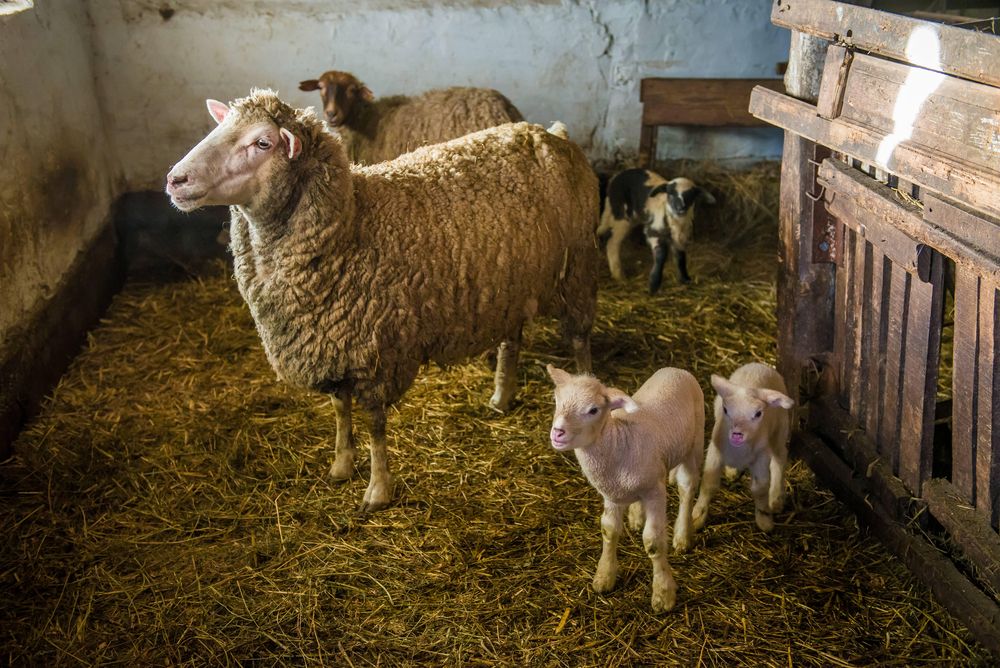
Sheep breeding
The organization of this process requires certain knowledge and skills in order to properly breed a sheep. It is easier to find a suitable male in a neighboring flock if the maintenance of such a house is not provided.It is necessary to ensure that insemination does not occur earlier than the established time: for this, it is enough to limit the joint stay of individuals of different sexes.
When the scheduled time comes, the animals are again brought together and in the future, their joint stay is possible until the beginning of lambing. Before embarking on such an important stage as sheep breeding, you need to consult someone, you can watch training videos, photos, study the nuances, consultation and the presence of a veterinarian are also required.
Nuances of keeping sheep in winter
Sheep raising and sheep keeping is currently very popular in slatted floors. In a personal subsidiary farm, it is important to raise healthy and active animals using this method. The stall maintenance of lambs is no different from other types, only you need to pay special attention to the insulation of the room.
The peculiarities of caring for sheep in the cold season in many ways depend on the chosen breed. Cold-hardy sheep tolerate wintering much easier and practically do not require special conditions during this period.
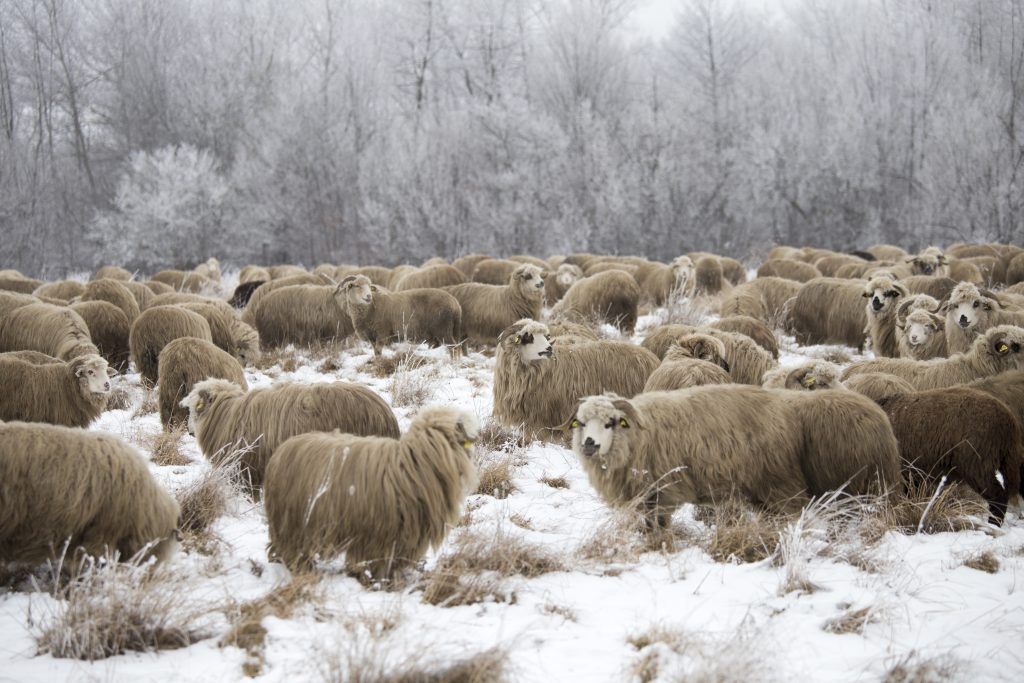
Keeping sheep in winter
They can easily overwinter in cold sheds with only deep bedding. Another thing is with southern breeds: for them it is necessary to equip a sheepfold, where additional heating will be provided. Representatives of the Buubei meat breed are one of a kind, for them there are no differences between winter and summer residence, so in the cold season such a lamb can only remain under one shed. This breed is worth getting to know it, watch various videos and photos.
Features of the diet of pregnant and single ewes
The technology of feeding lambs at home must be fully observed and not worse than in industrial pastures and factories. For sheep, if the farm is small, it is more profitable in the warm season to provide the opportunity to graze on fresh grass - only feed chalk and table salt are added to such a diet. In summer, it turns out to significantly save on nutrition for the sheep, besides, it is much easier to feed them. Among other things, it must be borne in mind that the feeding ration should be balanced, and the sheep should not be abruptly transferred from grass to hay and vice versa: such a transition should be made gradually by mixing different proportions.
It will take a week and a half to switch to a new feeding regimen, so as not to cause additional stress on the gastrointestinal tract and its disorders. As for the winter diet of pregnant ewes, during the first half of pregnancy it does not differ from the diet of unfertilized females. It is better that there is no division of the sheep in the flock into pregnant women and no.
At a certain stage, differences in nutrition arise, so that this brings additional hassle in the care process. The main diet of sheep consists of hay and concentrates, and root crops, chalk, sulfur are introduced as additional complementary foods to provide the animal with a complex of essential vitamins.
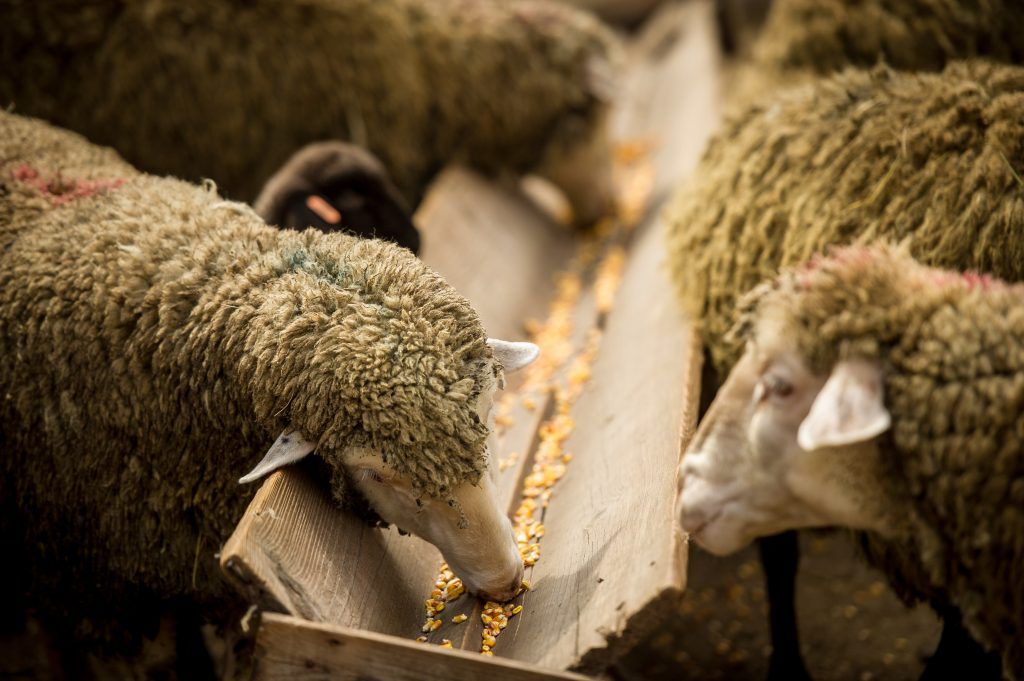
It is necessary to provide the sheep with vitamins
In nutrition, a significant place is given to the correct diet. There is a misconception that in winter it is possible to reduce the amount of water, which is a big mistake, which can result in diseases and a depressed state of individuals in the flock. Water cannot be replaced with snow, as some believe: snow is distilled water and does not contain essential nutrients and substances.
It is important to pay attention to the temperature of the food for feeding, the same applies to the supply of water: young ewes should not be given cold water. It must be at room temperature, and on the walk, they provide for the installation of a heated drinker.
How to properly organize a mating
It is important to observe the behavior of the female in order to notice the first signs of sexual heat. When ready for mating, the sheep's vulva turns red and swells.Mucus of different consistency begins to flow out of the loop, by which it is possible to determine the period of heat: the longer the duration of this period, the thicker the mucus, it becomes similar to sour cream.
At the time of mating, the female should not be oily and emaciated: these extremes negatively affect the possibility of successful fertilization.
There are some tips on when to mate. It is better to count the time so that the lambing falls just at the time of the appearance of the green grass. Usually, a favorable period falls in the winter, just in the second half of pregnancy, when enhanced nutrition is required - the sheep will be able to graze on the grass on their own.
Sheep giving birth
Prepare the sheep before lambing. First of all, the hair is cut off near the anus and genitals. This is done in order to maintain hygiene so that the newborn has minimal contact with dirty hair after birth. A separate room is prepared for the female, which should be dry, warm and clean. Straw or hay is spread on the floor.
The onset of labor is evidenced by abdominal prolapse and vulvar edema. From this moment, the female begins to choose a comfortable position for lambing. Most often this occurs while lying or standing.
The female can choose a standing position, and therefore it is necessary to remove all unnecessary objects and ensure the softness of the floor so as not to injure the lamb. If a sheep has a multiple pregnancy, then the interval between births should be counted: usually it is 20-45 minutes. At the end of childbirth, it is necessary to check whether the placenta has completely come out in order to avoid infection and the development of diseases. If you know how to properly help a female during childbirth, then even a novice farmer with the help of a veterinarian will cope with this task.
The first days of a newborn lamb
After birth, newborns are wiped with a tourniquet of straw. The lamb is then given to the sheep to lick it completely. It is important to make sure he tastes the colostrum and is able to feed. Moreover, this process should take place already in the first minutes after birth, because this is a natural way to obtain immunity from the mother.
Unfortunately, the sheep's resources for feeding the offspring are limited: she is able to provide only 2 of her calves with adequate milk nutrition. If the number of offspring is greater, then the owners are engaged in feeding, using milk replacers. Of course, there is an option to raise lambs with the female in large numbers, but in this case it will be necessary to feed everyone.
Having familiarized yourself with the main points of how to breed sheep and properly maintain animals, you can see that these are very unpretentious and do not require special conditions. To make the right choice, you need to focus on choosing the right breed: this will make their maintenance even easier.


